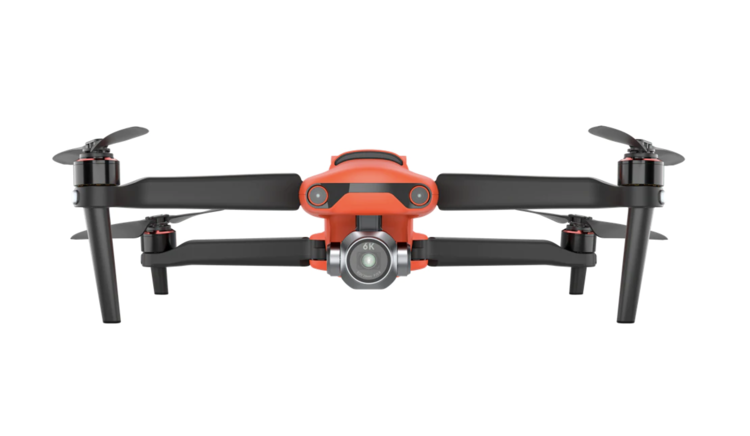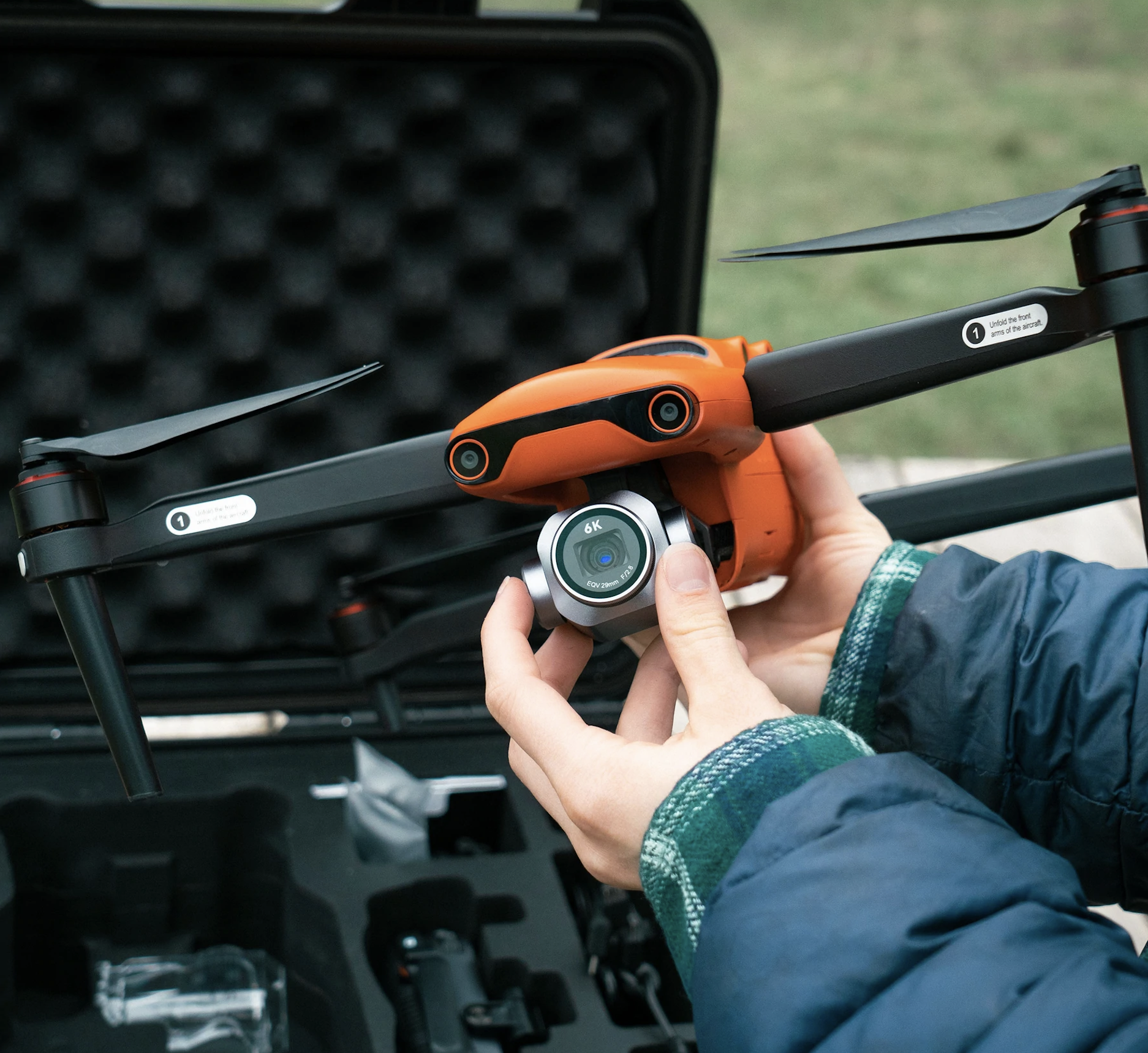Credit: Autel Drones
With solar use cases, the drone you choose matters. Between battery life, flight capabilities, and handling in different weather, it’s critical to treat a drone purchase like a business tool versus a fun technology toy.
At Scanifly, we’ve seen and reviewed multiple drones including the Skydio 2 (both hardware and software) and a comparative review of the DJI Mavic 3, EVO Lite, and EVO Nano.
Now we’re taking a look at the Autel Evo II Pro 6K and providing our view on whether it’s a good candidate to be a solar workhorse.
Autel Evo II Pro 6K facts overview

Credit: Autel Drones
Weight: 2.58 lbs (1,174 g).
Sensor size: 1”.
Transmission range: 9 KM.
Flight time: Up to 40 minutes.
Cameras: 6K Ultra-HD.
Price: $1,795 (Standard); $2,095 (Rugged bundle).
Where to buy: Autel Drones store.
Autel Evo II Pro 6K pros
Battery life: In our flight tests, battery life was approximately 36-38 minutes. Not quite the 40 minutes promised, but a solid amount of time for even a large commercial solar survey. This is comparable to the new DJI Mavic 3 and has a longer battery life than the Mavic 2 (which is only around 30 minutes).
Build quality: The drone feels solid in your hands, unlike smaller drones that sometimes leave you concerned you’ll break something if you grab it the wrong way. During our test flight, we had no concerns about handling the drone normally.
Flight stability and sturdiness: The battery is slightly bigger and heavier than other drones like the DJI Mavic Mini, but this has the wonderful effect of keeping the drone more stable in the air. During our test flights it was noticeably more stable than other drones we’ve tried, even in wind.
Additional flight features natively in-app: Not only does Autel match the DJI app for point of interest (POI) flights, you can also do larger pre-planned, grid-style missions natively in the app (the same feature on DJI requires using a different app). This is great for both residential and commercial solar use cases all within one app.
Additional screen for camera views while flying: The EVO II Pro 6K comes with a small screen on the controller, meaning you can fly the drone without needing a smart controller or using your smartphone.
Autel Evo II Pro 6K cons
Brand name recognition: The Autel brand is simply less known than DJI, which makes it slightly more difficult to find accessories, batteries, or replacement parts.
The future of Autel: While this drone is powerful, there are concerns about whether Autel can truly keep up or match DJI in the long run. Drones are a tough and competitive space.
Pricing: The Evo II Pro 6K is more expensive than similarly powerful drones like the DJI Mavic Air 2. However, the Evo II Pro 6K has more features (namely the ability to do pre-planned flights natively in the app), so this is a “get what you pay for” kind of con.
Obstacle avoidance is too aggressive: In our test flights, the drone would occasionally stop and hover in place if it got too close to an obstacle. And unfortunately, it’s hard to get it moving again because of how sensitive the obstacle avoidance feature can be. This is a bit inconvenient if you can obviously see there’s room for the drone to fly, but you can also feel more confident that the drone won’t crash.
Final verdict: Should you use the Autel Evo II Pro 6K for solar surveying?

Credit: Autel Drones
Our test flights found that the Autel EVO II Pro 6K is a solid competitor to DJI and even adds a bit more functionality that is especially relevant to solar. While it has a ways to go to match DJI’s brand dominance, Autel is still a recognizable name brand in the drone space. Further, it seems Autel’s strategy was to match DJI’s basic features, which means you can easily learn to fly an Autel drone if you’re used to DJI drones already.
In the end, we believe this is a great drone for solar. The battery life, flight stability, and additional flight modules make this a solid drone for both residential and commercial solar site surveying use cases.






